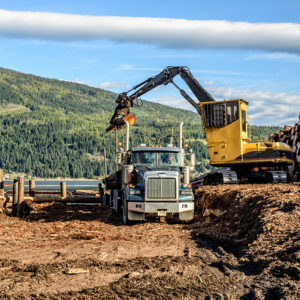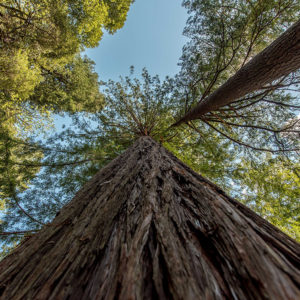Putting Nature at the Heart of Canada’s Recovery
Flowers are blooming across Canada and billions of migratory birds are returning to their summer homes. Our parks are slowly reopening, and friends and families are enjoying responsibly distanced walks as tree buds sprout overhead.
We’re still in the throes of an unprecedented crisis, and Canadians continue to work hard to flatten the curve and help one another cope. And yet, spring has sprung. Nature is demonstrating that new growth and hope are still possible. This same determination and sense of change must guide how the Canadian government charts economic and social recovery in the months to come.
Canadians need bold public leadership and investment from the federal government now more than ever. We’re grappling with a devastating new pandemic and economic recession. And we’re doing so while confronting greater, longer-standing threats to our collective well-being: a warming planet and a crisis of species collapse that has already caused alarming population declines in half of all Canadian wildlife.
Our planet has spent decades, not months, in the intensive care unit. Now, the Canadian government has a unique chance to triage these four crises by putting nature at the heart of Canada’s recovery plans.
COVID-19 has laid bare the fact that our relationship with nature is badly out of balance. Scientists have warned that the destruction of habitat, alongside other factors connected to the sale and trade of wild animals, is a key driver in the spread of diseases like the coronavirus.
As Canadians avert our eyes from computer screen to window and look forward to our daily breath of fresh air, more of us are realizing the important role nature plays in our well-being—in connecting us with the Earth and one another. Indigenous peoples have understood this for millennia. Canada’s economic recovery must be shaped by this wisdom and these renewed values.
Redefining What’s Essential
This crisis has changed how we view and value essential infrastructure and services. These include health care, eldercare, community gardens, and our many frontline workers.
But we now more clearly see that nature is also essential: from nearby greenspace, to forests, oceans, wetlands, wildlife, and the critical services they provide, including food, fresh water, clean air, pollination, and a frontline defense in the fight against disease and climate change.
The pandemic has also highlighted the vulnerabilities and inequities that exist within our country. As with climate change, Indigenous peoples, women, and remote communities are the ones most affected.
Canada’s social and natural infrastructure needs urgent rebuilding.
As we chart a path to recovery, let’s ensure we emerge stronger and better equipped to care for one another and the planet’s life support systems. This is not a return to “normal”—our business-as-usual autopilot mode was part of the problem.
Just as Canadians have redefined what’s essential, we urge the Canadian government to invest in a new, nature-centred normal. Putting nature at the heart of Canada’s economic recovery strategies can generate jobs, jumpstart our economy in the right direction, contribute to reconciliation, and strengthen the natural ecosystems we all depend on for a clean and healthy future.
A nature-centred recovery will benefit communities across Canada. It can support farmers and rural communities in their efforts to restore wetlands and rivers bordering their property. We can put people in slumped industries back to work replanting the scars left by unused logging roads and improving and retrofitting park infrastructure. Ranchers can restore endangered grasslands. We can support Indigenous-led conservation and invest in the health of fisheries and coastal communities by rebuilding and protecting marine ecosystems. The creation of a Canadian nature corps could support many of these efforts.
Critically, these stimulus measures will accelerate momentum towards Canada’s long-term goals of protecting nature and curbing greenhouse gas emissions. The government has already pledged to protect 25 percent of land and ocean ecosystems by 2025 and 30 percent by 2030. It has also committed to investing in nature-based solutions to climate change by planting two billion trees and putting in place measures to restore and protect forests, grasslands, wetlands, and other ecosystems in order to sequester carbon and build resilience for Canadians and wildlife alike.
This pandemic is a devastating wake-up call for everyone, but let’s not dwell in the darkness. We’ve also seen Canadians come together like nothing in recent history.
The Canadian government has a historic and important opportunity to work with provinces, territories, Indigenous governments, and communities across the country. It’s an opportunity to rewrite our relationship with nature—or continue ignoring the climate and biodiversity loss crises that will perpetuate future pandemics.
As the seasons change, we must shake off the old and allow for the new.



